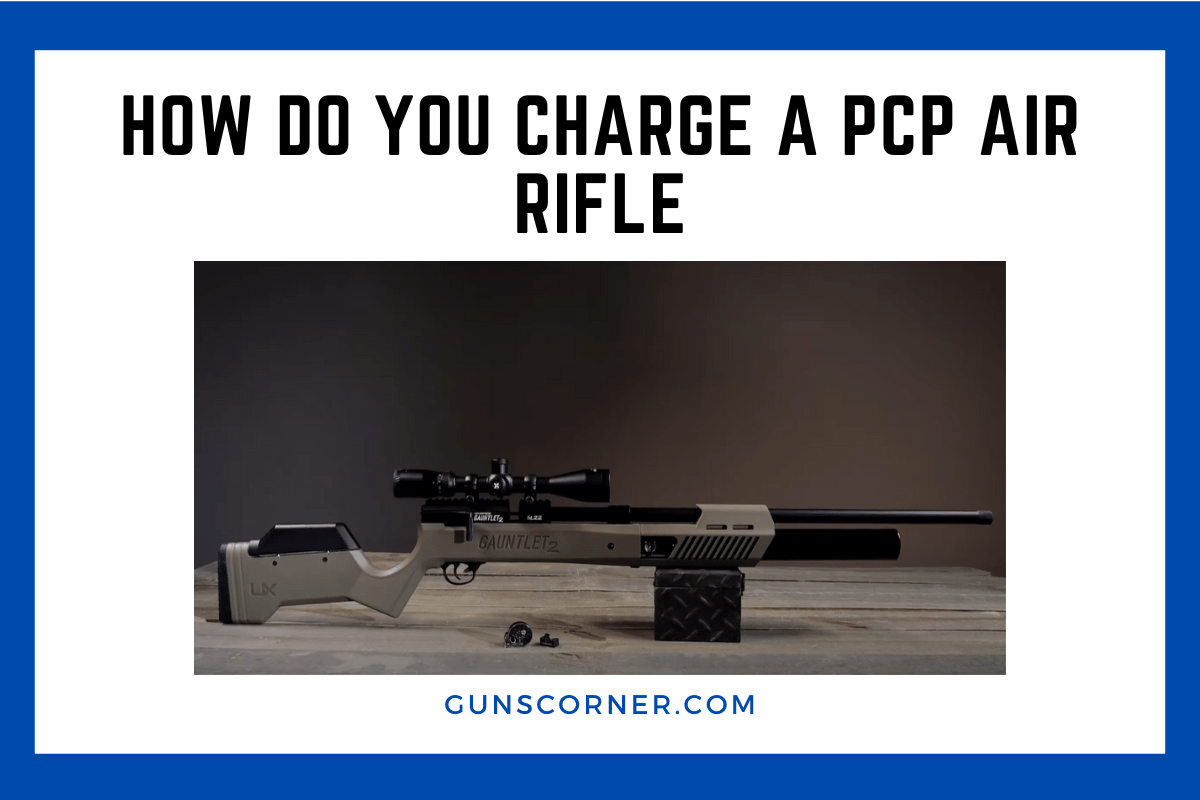PCP air rifles offer great power and accuracy, but they need regular charging to perform well. These guns use compressed air stored in a reservoir, allowing for multiple shots between fills.
To charge a PCP air rifle, you’ll need a high-pressure air source capable of reaching 2000-3000 psi and the right connecting equipment.
The charging process is straightforward but requires care and attention to safety. You’ll need to connect your air source to the rifle’s inlet valve using a fill probe.
It’s important to charge the gun to the correct pressure and avoid overcharging, which can damage the gun or compromise safety.
Proper maintenance after charging helps keep your PCP air rifle in top condition. This includes checking for leaks, cleaning the fill probe, and storing the gun safely.
With the right approach, charging your PCP airgun can be a simple and routine part of your shooting experience.
Key Takeaways
- PCP air rifles need a high-pressure air source and proper equipment for charging.
- Careful attention to correct pressure levels is crucial during the charging process.
- Regular maintenance keeps the rifle performing well between charging sessions.
Understanding PCP Air Rifles
PCP air rifles are powerful and accurate shooting tools. They use compressed air to propel pellets at high velocities.
Basics of PCP Mechanism
PCP stands for pre-charged pneumatic. These rifles have an air reservoir that holds compressed air at high pressure. The reservoir connects to the barrel through a valve system.
When the trigger is pulled, a small amount of air is released. This air pushes the pellet down the barrel. The pressure can range from 2000-3000 psi in most PCP rifles.
The air reservoir needs refilling after a certain number of shots. This is done using a high-pressure air source like a hand pump or scuba tank.
PCP rifles offer consistent power for multiple shots. This is because the air pressure stays relatively stable until the reservoir needs refilling.
Advantages of PCP Air Rifles
PCP air rifles have several benefits over other types. They are known for their accuracy and power.
These rifles produce little recoil. This makes them easier to shoot accurately, especially for beginners or those with physical limitations.
PCP rifles are quieter than many other air guns. This makes them suitable for backyard target practice or pest control.
They allow for quick follow-up shots. Many PCP rifles are repeaters, holding multiple pellets in a magazine.
Charging a PCP rifle is straightforward with the right equipment. This process can be done at home, giving shooters more control over their equipment.
PCP rifles offer consistent power over many shots. This makes them reliable for hunting or competitive shooting.
Preparation for Charging
Charging a PCP air rifle requires careful preparation and the right equipment. Safety should be the top priority, and having the proper tools is essential for a successful charging process.
Safety Measures
Charging a PCP airgun requires careful attention to safety. Always wear safety glasses to protect your eyes from potential air leaks or debris.
Keep the rifle pointed in a safe direction during the charging process. Check all connections and fittings before starting. Look for any signs of wear or damage on hoses and valves. If anything looks worn, replace it before charging.
Ensure the area is well-ventilated. Never smoke or have open flames nearby when handling compressed air. Keep children and pets away from the charging area.
Required Equipment
To charge a PCP air rifle, specific equipment is needed. A high-pressure air compressor capable of reaching 2000-3000 psi is essential. Most PCP rifles require this pressure range for optimal performance.
A fill probe or adapter that fits the rifle’s inlet valve is necessary. This connects the air source to the gun. A pressure gauge helps monitor the charging process and prevent overcharging.
High-pressure air tanks or cylinders can be used as an alternative to compressors. These are portable and convenient for field use. Proper filling hoses and connectors are needed to safely transfer air from the tank to the rifle.
Charging the Rifle
Charging a PCP air rifle requires careful steps and proper equipment. The process involves filling the rifle’s air reservoir to the correct pressure. Proper technique ensures safety and optimal performance.
Step-by-Step Charging Process
Start by attaching the fill probe to the rifle before connecting it to the air source. This prevents damage to the fill port.
Next, slowly open the valve on your air source. Watch the pressure gauge closely as it rises. Stop filling when you reach the manufacturer’s recommended pressure.
Most PCP rifles need 2000-3000 psi of pressure. Never exceed the maximum pressure stated in your rifle’s manual.
After reaching the right pressure, close the air source valve. Bleed excess air from the hose before disconnecting. Remove the fill probe carefully to avoid damaging the o-rings.
Troubleshooting Common Issues
If your rifle isn’t holding pressure, check for leaks around the fill port. Apply soapy water to spot bubbles indicating air escape. Tighten connections or replace o-rings if needed.
Low fill pressure can result from a faulty gauge or air source. Test your equipment on another rifle or get it checked by a professional.
Difficulty inserting the fill probe may mean dirt in the port. Clean it gently with a cotton swab. Never force the probe, as this can cause damage.
If charging takes too long, your air source might be low. Refill tanks or compressors as needed for efficient filling.
Maintenance Post-Charging
Proper care after charging your PCP air rifle is crucial for its longevity and performance. Regular upkeep and correct storage methods help maintain the rifle’s accuracy and prevent damage.
Regular Maintenance Tips
After charging your PCP air rifle, wipe it down with a clean, dry cloth to remove any dirt or moisture.
Check the fill port for debris and clean it if needed. This prevents contaminants from entering the air reservoir.
Inspect the O-rings on the fill probe and rifle’s inlet valve. Replace them if they show signs of wear or damage.
Lubricate these O-rings sparingly with silicone grease to maintain a good seal.
Examine the air gauge regularly for accuracy. A faulty gauge can lead to under or overcharging, which affects performance and safety. If you notice any issues, have a professional check and calibrate it.
Storage Recommendations
Store your PCP air rifle in a cool, dry place away from direct sunlight. Extreme temperatures can affect the air pressure inside the reservoir. A gun safe or locked cabinet is ideal for security.
Keep the rifle partially charged when not in use for extended periods. This helps maintain the integrity of the seals and valves. A charge of about 1000 PSI is usually sufficient.
Use a soft gun case or rifle slip to protect the rifle from dust and scratches during storage. Avoid storing it in a hard case for long periods, as this can trap moisture and lead to corrosion.
Always store the rifle unloaded with the safety on. This prevents accidental discharge and ensures safety. Remove any pellets from the magazine or breech before storage.

